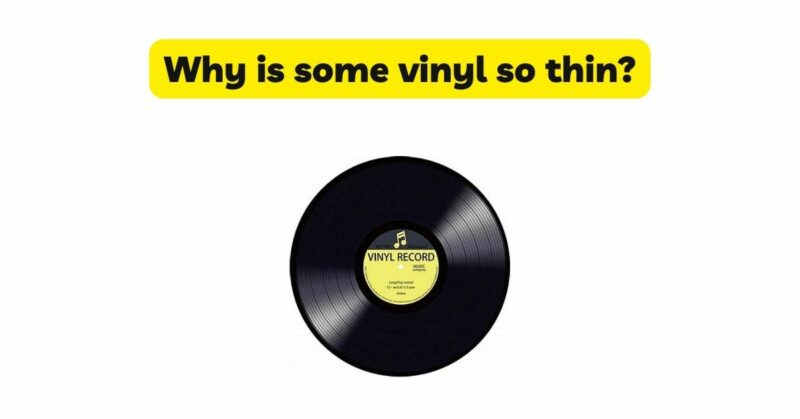Vinyl records have experienced a remarkable resurgence in recent years, captivating both audiophiles and music enthusiasts alike. The tactile experience and warm sound quality of vinyl have rekindled a love affair with this analog medium. However, keen observers may notice that not all vinyl records are created equal. Some records are noticeably thinner than others, prompting the question: why is some vinyl so thin? In this article, we will explore the various factors that contribute to the thinness of vinyl records, including technological advancements, manufacturing techniques, and market demands.
- The Evolution of Vinyl Records: To understand the thinness of modern vinyl records, it is essential to delve into their historical development. Vinyl records first emerged in the 1940s and were initially thick and heavy due to the limitations of early manufacturing processes. Over time, advancements in technology and manufacturing techniques have revolutionized the production of vinyl, allowing for thinner and more lightweight records.
- Vinyl Composition and Manufacturing: Vinyl records are primarily composed of polyvinyl chloride (PVC), a versatile and durable material that is ideal for record production. In the past, higher PVC content was necessary to ensure playback quality and prevent warping. However, as manufacturing techniques have improved, thinner records can now deliver comparable audio fidelity while maintaining structural integrity.
- Technological Innovations: Advancements in vinyl cutting technology have played a pivotal role in enabling thinner records. The introduction of Direct Metal Mastering (DMM) and Computer Numerical Control (CNC) cutting machines has allowed for more precise and efficient cutting processes. These technological innovations minimize the need for excess vinyl, resulting in thinner records without compromising audio quality.
- Market Demand and Consumer Preferences: In recent years, the vinyl market has witnessed a surge in demand, with new enthusiasts joining the vinyl revival movement. This growing market has prompted record labels to explore cost-effective manufacturing techniques that cater to the increased demand while maintaining profitability. Thinner vinyl records are often cheaper to produce, allowing manufacturers to meet market demand at more affordable prices.
- Environmental Considerations: Thinner vinyl records also align with a broader trend towards sustainability and environmental consciousness. Vinyl production consumes resources, and thinner records require less raw material, energy, and transportation. As the music industry strives to reduce its ecological footprint, thinner vinyl records present a viable solution that benefits both manufacturers and environmentally conscious consumers.
- Aesthetic Appeal: Beyond the practical considerations, thinner vinyl records can also be a deliberate artistic choice. Some artists and record labels opt for thinner records to create a unique visual presentation. Thin records can be more flexible and translucent, adding an aesthetic allure that complements the artistic vision of the album. This intentional design choice further diversifies the vinyl landscape.
- Handling and Portability: One advantage of thinner vinyl records is their increased portability. Lightweight and easier to handle, thin records are less prone to damage during transportation and everyday use. Additionally, they occupy less space on shelves and in record storage units, allowing collectors to expand their collections without the physical constraints of bulkier records.
- Challenges and Considerations: While thinner vinyl records offer several advantages, they are not without their challenges. The reduced thickness increases the risk of groove distortion, resulting in potential compromises to audio quality. Additionally, excessive thinness can make records more susceptible to warping or damage if mishandled. Striking a balance between thinness and durability remains a crucial consideration for manufacturers.
Conclusion: The thinness of vinyl records is the result of a fascinating interplay between technological advancements, market demands, and artistic preferences. As the vinyl industry continues to evolve, manufacturers strive to find the perfect equilibrium between audio quality, durability, and cost-effectiveness. Whether for practical reasons, environmental concerns, or artistic endeavors, thinner vinyl records have secured their place in the ongoing vinyl revival, enriching the music-listening experience for generations to come.


